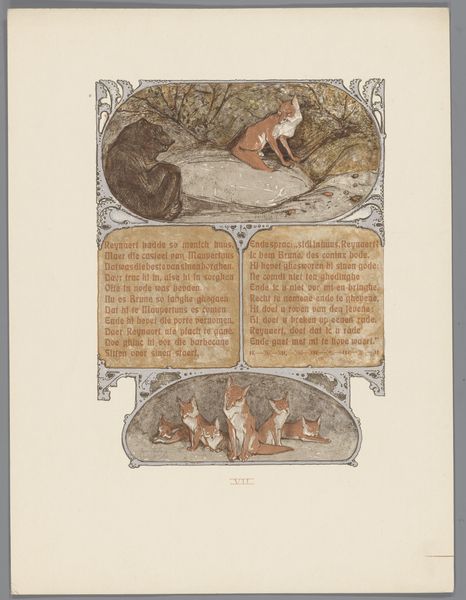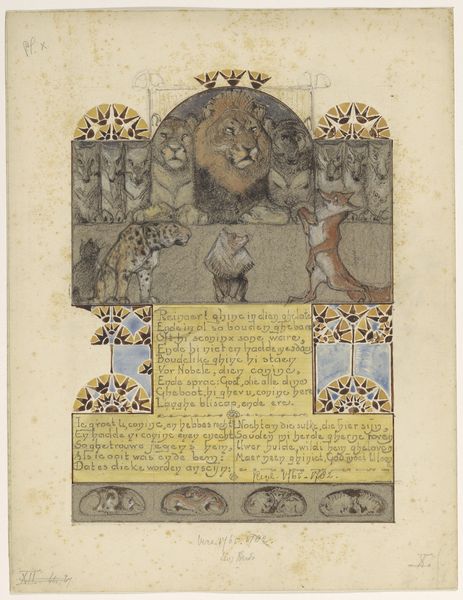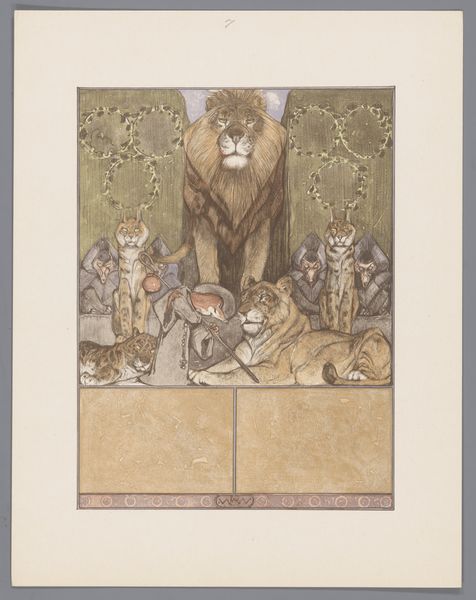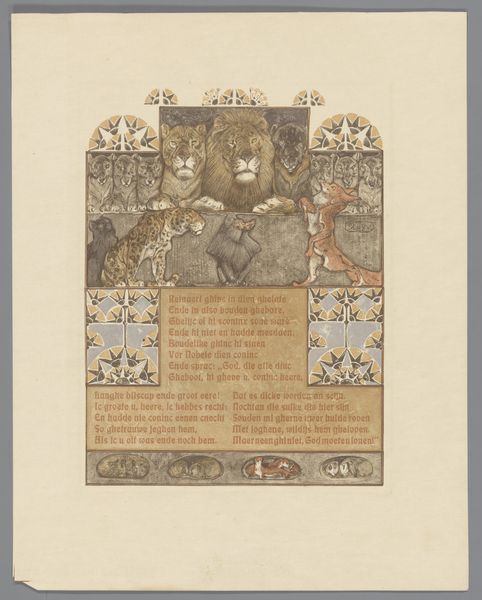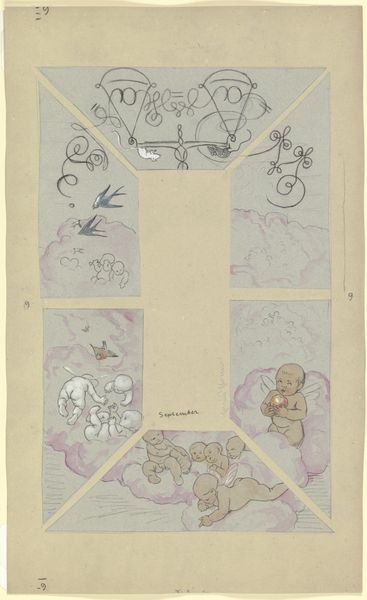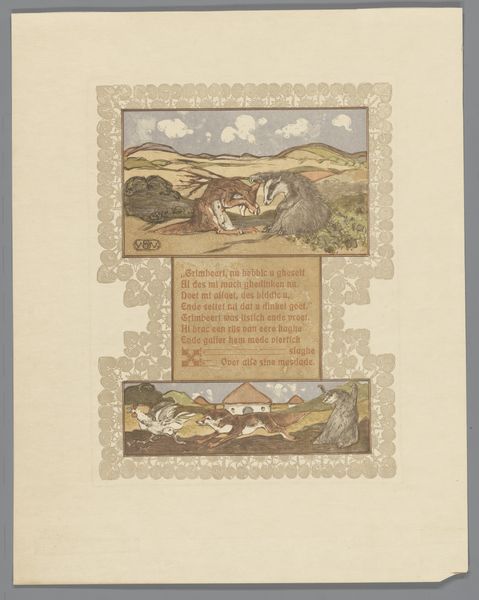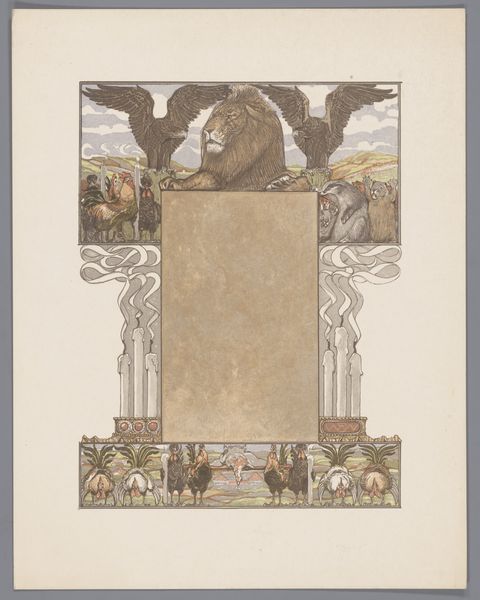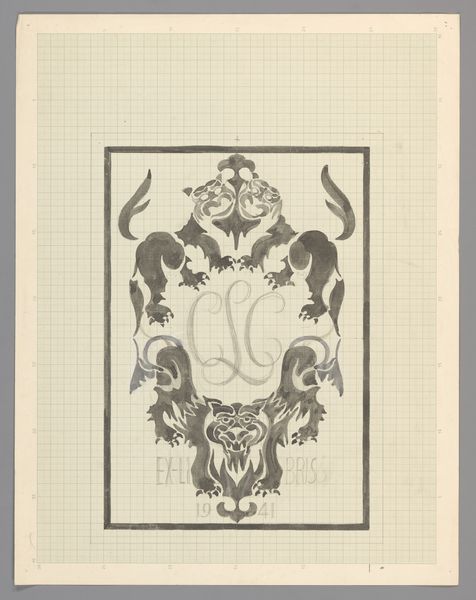
drawing, mixed-media, paper, watercolor
#
drawing
#
mixed-media
#
art-nouveau
#
landscape
#
figuration
#
paper
#
watercolor
#
symbolism
#
watercolour illustration
Dimensions: height 331 mm, width 259 mm
Copyright: Rijks Museum: Open Domain
Editor: So, this is Bernard Willem Wierink's "Zittende vrouw, twee honden en een leeuw (Nobel)," from 1910. It's a mixed media piece, combining drawing and watercolor on paper. The imagery, the animals flanking the woman… it feels very symbolic to me. What do you see in this piece? Curator: It's interesting that you pick up on the symbolism. For me, this work resonates with the Art Nouveau movement’s engagement with social and political ideals. Look at the way Wierink integrates text, image, and decorative elements. This wasn't merely about aesthetic beauty; it was a deliberate act of visually communicating a particular ideology. The lion, dogs, and the seated woman—how do they relate to each other? Consider the positioning and how they serve the overall message alongside the surrounding text. Editor: Well, the lion seems to represent nobility, or maybe strength. The dogs look like loyal companions. But how do they function within the social context you're describing? Curator: Consider the time this piece was created – the turn of the 20th century. Europe was grappling with changing social structures, anxieties about modernity, and the rise of various political movements. How does this tableau of a woman, flanked by loyal canines, and a lion gazing outward play into contemporary notions about femininity, power, and loyalty in a changing world? Who is she in relation to power, literally 'sitting' above it? Editor: So, you're suggesting the artist used these established symbols to comment on contemporary issues of power and societal roles? The Art Nouveau style makes it beautiful, but underneath, there's a critical message? Curator: Precisely. Wierink, consciously or unconsciously, tapped into existing visual vocabularies to engage with socio-political currents of the time. What’s intriguing to me is understanding how these choices reflect not only personal beliefs, but also contribute to a broader cultural discourse on identity, class, and gender. Editor: This has definitely changed my perspective. I was initially drawn to the aesthetic, but seeing it as a commentary on societal dynamics makes it much more powerful. Curator: Exactly, art often functions as a mirror, reflecting and refracting the complexities of its time.
Comments
No comments
Be the first to comment and join the conversation on the ultimate creative platform.

